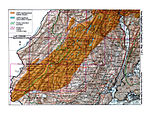Jefferson Township High School (New Jersey)
1964 establishments in New JerseyEducational institutions established in 1964Jefferson Township, New JerseyPublic high schools in Morris County, New JerseyUse American English from August 2020 ... and 1 more
Use mdy dates from May 2021
Jefferson Township High School is a four-year comprehensive community public high school, serving students in ninth through twelfth grades from Jefferson Township, in Morris County, in the U.S. state of New Jersey, operating as the lone secondary school of the Jefferson Township Public Schools. The school is located in the Oak Ridge section of the township. As of the 2021–22 school year, the school had an enrollment of 867 students and 83.0 classroom teachers (on an FTE basis), for a student–teacher ratio of 10.4:1. There were 79 students (9.1% of enrollment) eligible for free lunch and 22 (2.5% of students) eligible for reduced-cost lunch.
Excerpt from the Wikipedia article Jefferson Township High School (New Jersey) (License: CC BY-SA 3.0, Authors).Jefferson Township High School (New Jersey)
Weldon Road, Jefferson Township
Geographical coordinates (GPS) Address Nearby Places Show on map
Geographical coordinates (GPS)
| Latitude | Longitude |
|---|---|
| N 41.019448 ° | E -74.549868 ° |
Address
Weldon Road
Weldon Road
07849 Jefferson Township
New Jersey, United States
Open on Google Maps





